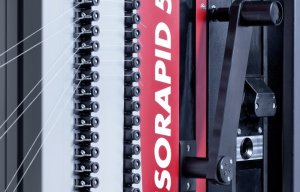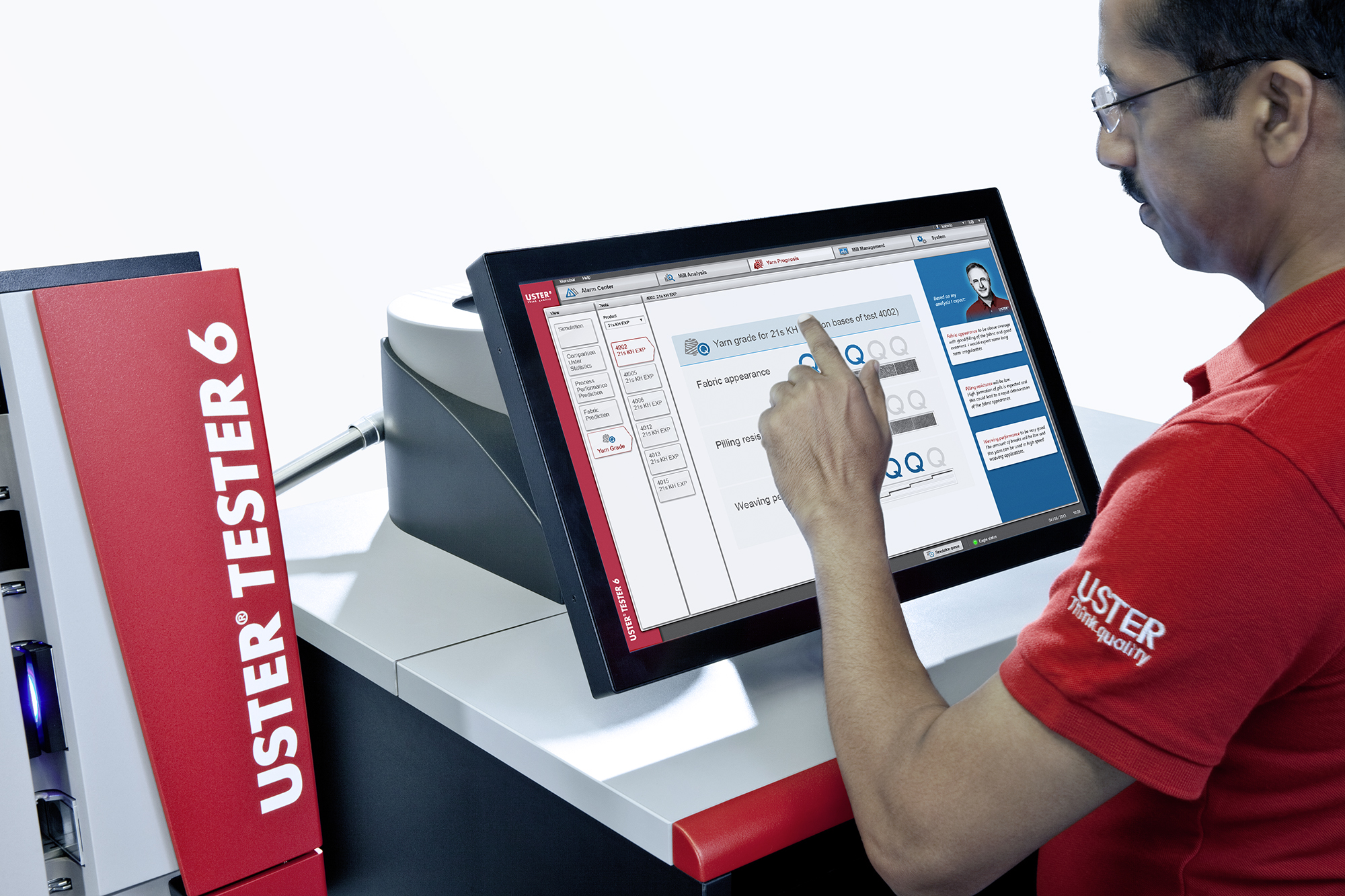
Uster presents new tensile test system
Bangladesh based PTHM, a supplier of high-quality knitting yarn, is supporting Uster in presenting the new Uster Tester 6 in Asia.

28th January 2016
Knitting Industry
|
Uster
Uster Technologies, the leading high-technology instrument manufacturer of products for quality measurement and certification for the textile industry, will debut its Uster Tester 6, which was launched at ITMA 2015 in Milan, in Asia at Dhaka International Textile & Garment Machinery Exhibition (DTG).
Pahartali Textile & Hosiery Mills (PTHM), a supplier of high-quality knitting yarn, is supporting Uster in presenting the new Uster Tester 6 at the 13th edition of the DTG show that is taking place from 28-31 January. PTHM is among the earliest customers for the tester, and already reports that the advantages have exceeded expectations.
“At the launch at ITMA in Milan, the new Uster Tester 6 received a very positive feedback, so we are eager to show this latest Uster innovation at more shows,” commented Sivakumar Narayanan, Head of Marketing within Uster Technologies.
PTHM is one of the pioneers of textile manufacturing in Bangladesh. Established in 1954, the company currently has an installed capacity of 71,760 spindles, producing 13,000 metric tons of yarn per year. As a supplier of high-quality knitting yarn used in export-oriented industries, PTHM is equipped with state-of-the-art machinery, including the most technologically advanced European and Japanese equipment.
Mahbubul Alam, CEO of PTHM, explained that this policy was also applied to quality control procedures. “It was clear from the beginning that our laboratory must be equipped with Uster fibre and yarn testing instruments,” he said.
The company already operates Uster HVI 1000, Uster AFIS and Uster Autosorter in its quality management regime and was seeking to replace its Uster Tester 4 – installed in 1998 – to cater for increased production. “The testing speed of 800m/min is already an appreciated improvement but the advantages arising from the Total Testing Center have exceeded our expectation regarding this investment,” said Mr Alam.
The Uster Tester 6 is the gateway to the Total Testing Center, in which its precision laboratory data is interpreted by the Uster Quality Expert software and then integrated with information from yarn clearers to provide a complete picture of spinning mill operations for the entire production volume.

Analysis of this data by Uster Quality Expert is the key, examining all quality parameters to guide spinning mills towards fact-based decisions on improvement actions. The scope of these features expands as further Uster instruments are linked to the system, the company explains.
Innovative extra support for management comes in the form of Assistant Q – an intelligent helper service. Part of the Total Testing Center, Assistant Q is designed to simplify complex issues and take over repetitive tasks, so managers can concentrate on the wider goals.
Spinners in Bangladesh, and knitting yarn producers generally, will especially value the Uster Hairiness technology provided by Uster Tester 6, the manufacturer reports. This hairiness solution – combining Sensor HL and Sensor OH – was another convincing factor in PTHM’s investment decision.
The Sensor HL was particularly attractive, the company says, for its complete evaluation of the vital hairiness parameter at high-speed for Hairiness Length Classification based on protruding fibre lengths. Together with the established Sensor OH, spinners now have a complete hairiness analysis, giving the best possible assurance against quality claims, the company reports.
Uster Tester 6 introduces a number of novel features for rapid fault-tracing and quality management, all designed to minimize downtime and optimize quality in both yarns and fabrics.
For PTHM, the fabric simulation tool was another investment clincher. This tool gives an advance display of how current yarn parameters will look in a knitted or woven fabric, using yarn boards – magnified for hairiness views – and reflected and transmitted light for some wovens.

Business intelligence for the fibre, textiles and apparel industries: technologies, innovations, markets, investments, trade policy, sourcing, strategy...
Find out more